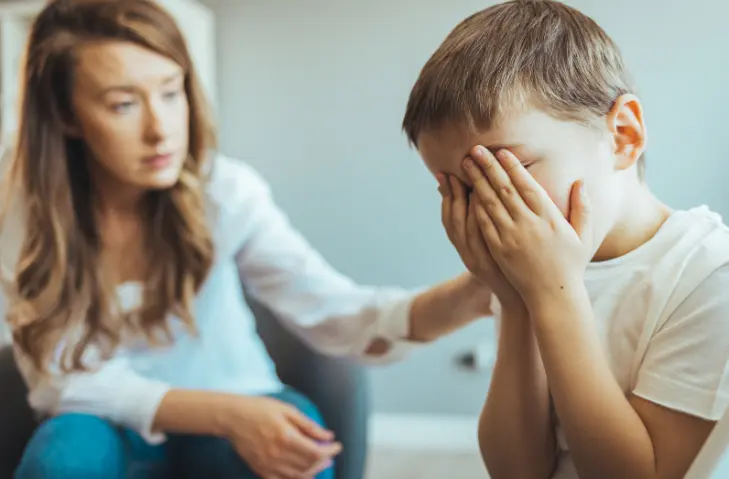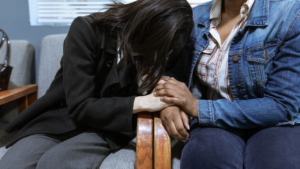Does your child consistently cry, exhibit fearful behavior, or experience panic or temper tantrums when separated from their primary caregiver? If so, your child may be suffering from separation anxiety disorder.
According to Boston Children’s Hospital, approximately 4% of children experience separation anxiety disorder. Child psychologists recognize different types of separation anxiety in children, and with proper care and precautions, parents can help their children overcome this anxiety.
In this article, I explain in detail about separation anxiety and the various types of separation anxiety disorders. Additionally, I provide guidance on how parents can support their children through this challenging experience. Let’s dive into it!
What is Separation Anxiety Disorder?
According to Dr. Howard E. Lewine, Chief Medical Editor of Harvard Health Publishing, ‘’Separation Anxiety Disorder is more common in children. It’s the fear of being apart from parents lasting for more than a month in a child older than seven that creates serious problems for the child or the family.’’ See the more common problems/illness.
Separation anxiety disorder, or SAD, is a common psychological condition where a child experiences excessive fear and distress when separated from someone to whom they are emotionally attached.
This anxiety is typical of the developmental phase and is considered a normal part of a child’s emotional growth. However, if the symptoms persist, it is necessary to see a doctor.
The symptoms of separation anxiety range from clinginess, crying, tantrums, and refusal to go to school. They can also report physical complaints like headaches or stomach aches.
What Causes Separation Anxiety Disorder?

Many experts suggest that all children experience brief feelings of anxiety when they are separated from their parents or primary caregivers.
Typically, these feelings develop from the child’s 6th to 8th month of birth until 3 years old. However, older children and adolescents can share this feeling. Several factors are the primary causes of SAD, from genetic to biological to family and environmental factors.
Genetic Causes for Separation Anxiety Disorder:
Many children who are diagnosed with separation anxiety disorder have a family history of other psychiatric conditions. Researchers believe this disorder is heritable and has genetic origins.
First-degree relatives of individuals with mental illness are at a higher risk of developing separation anxiety disorder, although the exact genetic cause remains unidentified.
Biological Causes for Separation Anxiety Disorder:
Like other mental health conditions, SAD is also linked to imbalances in brain chemicals. Scientists suggest that the system that generally regulates neurotransmitter levels isn’t working properly in children or patients who show symptoms of this disorder.
Environmental Factors Influencing Separation Anxiety Disorder:
Do you know the environment influences the development of a child’s behavior? Many believe that environmental factors are the primary causes of this anxiety disorder. It generally originates within the family. Many children diagnosed with separation anxiety disorder (SAD) are found to have experienced traumatic events such as the divorce of their parents, illness, or death in their family.
Sometimes, children learn to feel anxious from family members or others who are often stressed. Additionally, parents, primary caregivers, or siblings can, without realizing it, make young children more anxious.
Types of Separation Anxiety in Children

Child psychologists suggest that separation anxiety comes in different forms, which are correlated to age, the context of their separation, and environmental factors. Typically, there are three types of disorders found among children. These are explained below:
Age-Based Separation Anxiety in Children
For Infants and Toddlers (0-3 Years)
Separation anxiety is common in toddlers’ developmental stages. It typically appears around 6-8 months, peaks at 14-18 months, and gradually diminishes.
During this phase, children may show excessive crying and clinginess when separated from their primary caregivers.
Preschoolers (3-5 Years)
Preschoolers aged 3 to 5 may have excessive fears of new environments. During this phase, children might manifest school refusal or excessive worry about their parent’s safety. Symptoms can include bedwetting or thumb-sucking.
School-Aged Children (6-12 Years)
In this phase, children may persistently refuse to attend school due to a fear of separation. They might show symptoms such as headaches, stomachaches, or other somatic complaints when anticipating separation.
Adolescents (13-18 Years)
Adolescence can be challenging for children, as they may fear being away from family and have difficulty forming and maintaining friendships. They might also experience academic declines, such as a drop in school performance and attendance.
Anxiety can be triggered when leaving home for any reason, such as visiting friends or attending family events.
Context-Based Separation Anxiety Disorder
Home Separation Anxiety
Home separation anxiety is triggered when a child has to leave their home for any reason. Children may strongly resist leaving home with crying, tantrums, or clinging to their caregivers.
They might also show symptoms like headaches, stomach aches, and other physical complaints to avoid leaving home and being separated from their primary caregiver.
Medical or Health-Related Separation Anxiety
Medical situations, such as hospital stays, visits to the doctor, or any health-related separations from caregivers, trigger this type of separation anxiety.
Prolonged hospital stays can cause significant stress due to the unfamiliar environment and separation from caregivers.
Sleep-Related Separation Anxiety
Sleep-related separation anxiety occurs when children have difficulty sleeping alone or staying asleep without the presence of a caregiver.
Children may resist going to bed or require a caregiver to stay with them until they fall asleep.
Severity-Based Types Separation Anxiety Disorder
Mild Separation Anxiety
Mild separation anxiety is the least severe form of this disorder. Children experiencing mild separation anxiety may show some distress when separated from their primary caregivers, but they are generally manageable with ease and comfort.
In this type of separation anxiety, children show characteristics like temporary distress. They may also experience distress in participation activities but can overcome it with care and love.
Moderate Separation Anxiety
Moderate separation anxiety has a more noticeable impact on a child’s daily activities and routines. In this phase, the child is more stubborn and may require intervention from parents, teachers, or counselors to manage the anxiety effectively.
When separated from their parents and caregivers, children show significant anxiety and discomfort. This impacts their ability to participate in everyday activities. In moderate levels of SAD, children may attempt to avoid situations where separation is anticipated, such as refusing to go to school or participating in extracurricular activities.
Severe Severe Separation Anxiety
Severe separation anxiety significantly impairs a child’s ability to function in daily life. Children with severe separation anxiety may refuse to leave home or go to school. Their fear of being separated can be overwhelming and continuous.
In extreme separation disorder, children show characteristics like exhibiting extreme distress and panic attacks when faced with separation from their caregivers. They may also refuse to go to school or participate in any activities. Physical symptoms like headaches, stomachaches, and nausea are also common.
Treatment
Separation Anxiety is something that we must not take lightly among children. If these symptoms persist, it is crucial to see a child psychologist. Psychotherapy, i.e., working with trained therapists, can help lessen this kind of anxiety. There are many times when medication is used to overcome the severity of separation anxiety. Before giving your child any anxiety medicine, you must always consult with a doctor. It is also crucial that you help promote developmentally appropriate behavior in children.
Final thoughts
As discussed in this article, there are different types of separation anxiety in children. In the early stages of development, you should take precise measures so your children don’t feel lonely. You can always take daycare counseling sessions from Meaningful Beginnings for more information. Their years of experience handling young ones will help you overcome separation anxiety in children. Enroll your child at Meaningful Beginnings Daycare Center to overcome your child’s separation anxiety.








